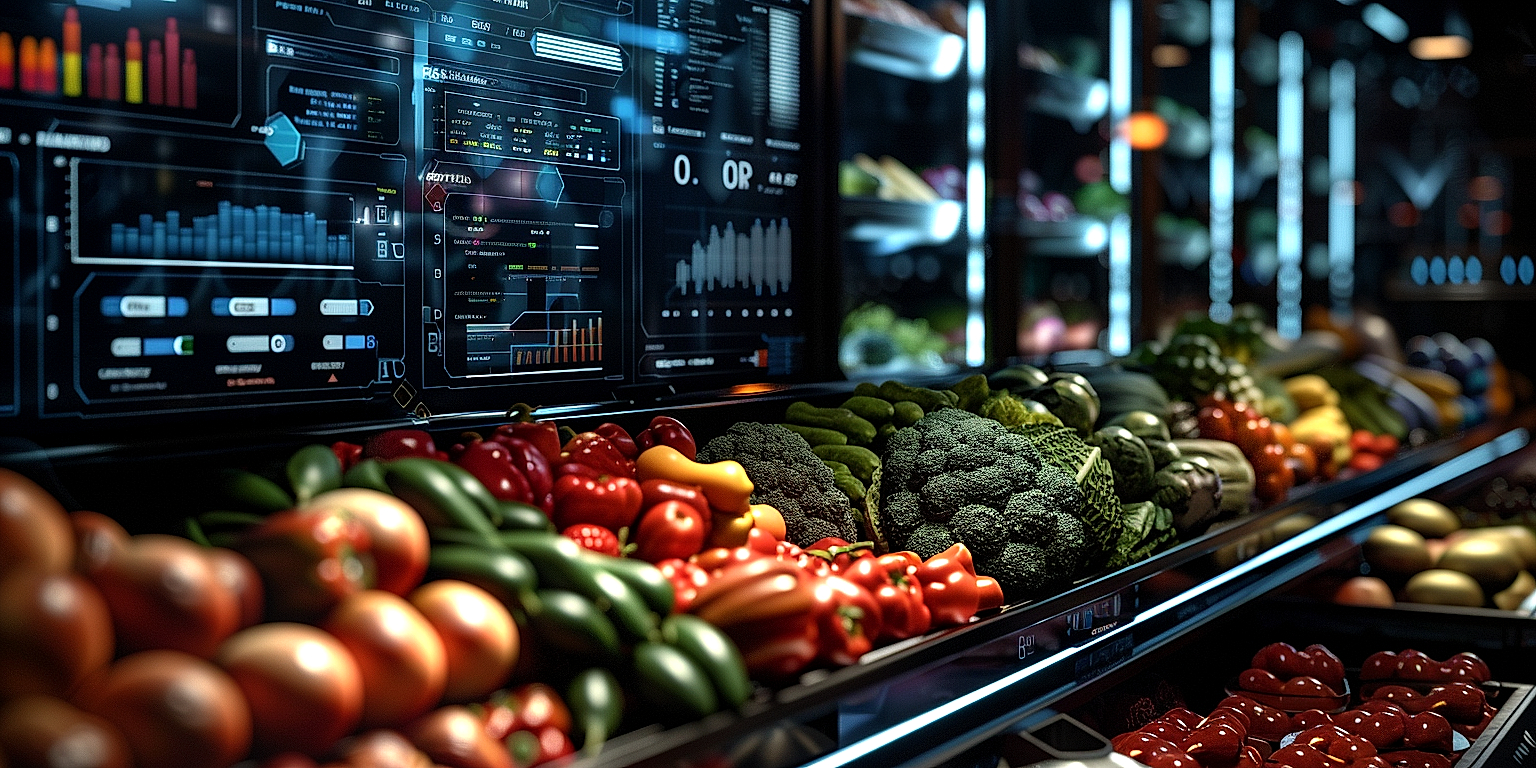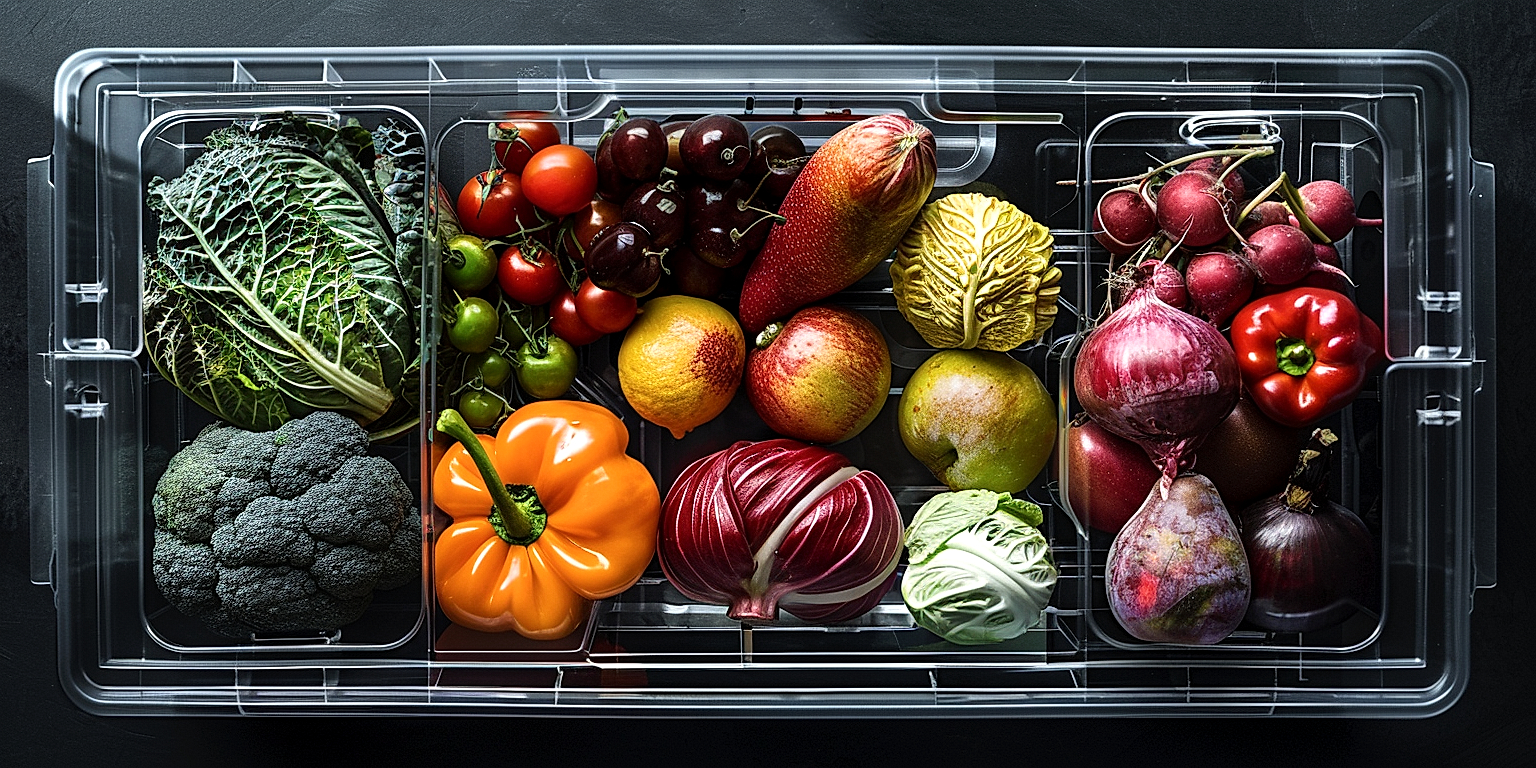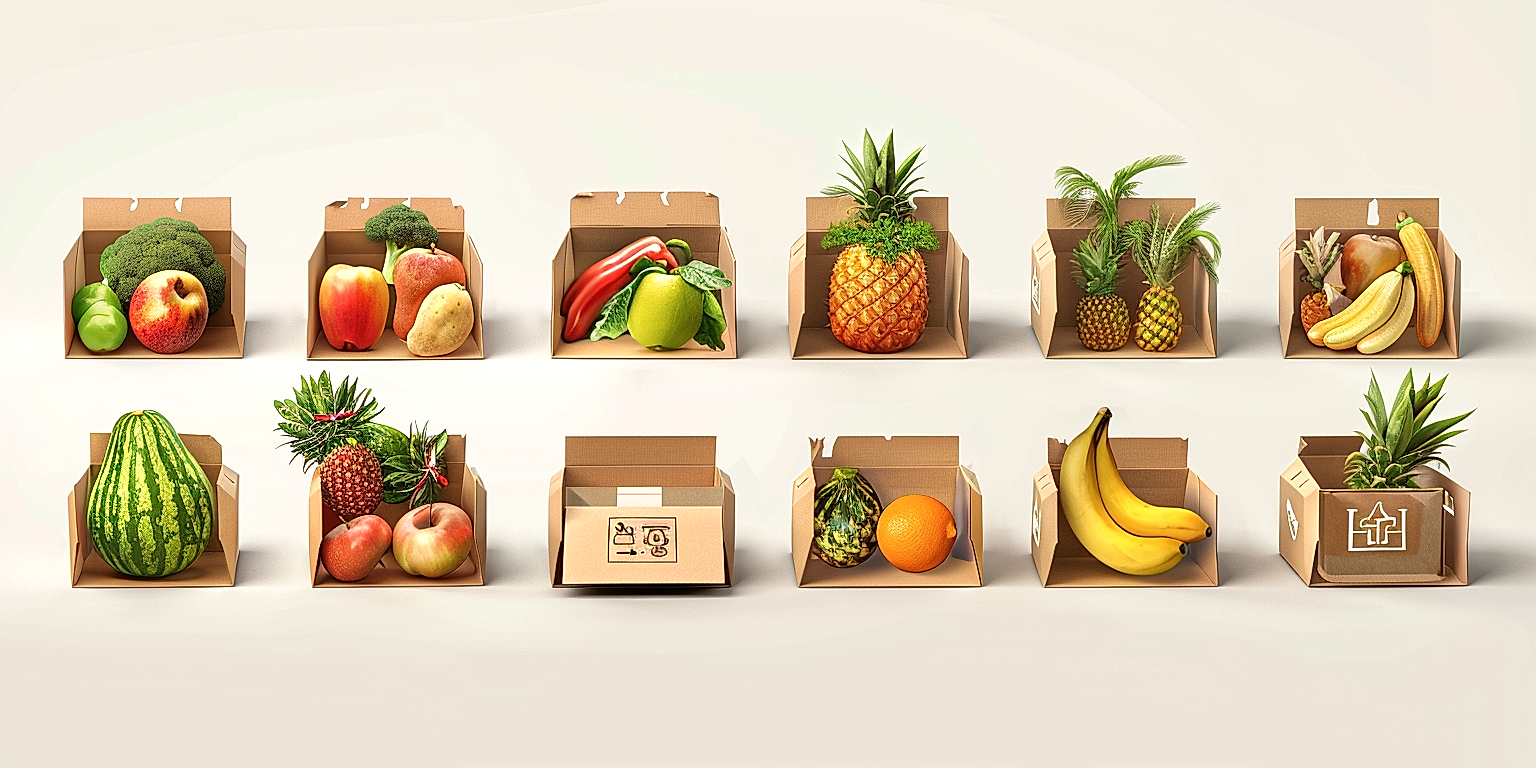In the highly competitive market of produce retail, creating a strong online presence is vital for success.
Establishing your brand online can significantly increase visibility and sales, but it needs to be done methodically and professionally.
Learning how to optimize your website can seem daunting, but fear not.
This article provides strategic tips for getting the most out of your online platform.
We’ll touch on areas like online marketing techniques, website layout, and usability.
Ultimately, these strategies aim to drive more traffic to your website and convert visitors into loyal customers.
Contents
- Tips For Optimizing Your Produce Retail Website
- 1. Use High-Quality, Appealing Images of Fresh Produce.
- 2. Implement Clear, Intuitive Site Navigation and Search.
- 3. Offer Relevant, Detailed Product Descriptions.
- 4. Introduce Easy-to-Use Online Ordering System.
- 5. Prioritize Fast, Mobile-Friendly Website Design.
- 6. Optimize Site for Local SEO Targeting.
- 7. Promote Customer Reviews for Trust-building.
- The Bottom Line
Tips For Optimizing Your Produce Retail Website
1. Use High-Quality, Appealing Images of Fresh Produce.
High-quality visuals can make an impactful difference when it comes to attracting and engaging site visitors for your produce retail business.
People are significantly more drawn to websites that provide appealing and high-quality images, particularly for businesses that revolve around food and fresh produce.
For this reason, it’s crucial that your website includes professional, high-resolution pictures of your actual products, offering a true and engaging representation of what you are selling.
The emphasis on image quality is an important aspect not to overlook – it can significantly influence the perceptions of your customer and can be the determining factor that leads to a sale.
Using a professional camera or hiring a professional photographer can be a worthwhile investment to ensure the quality of your images.
A visually appealing presentation of your products will not only enhance your website’s look, but also increase the trust factor with your potential customers.
Nothing screams ‘fresh’ louder than a vibrant, colorful photo of a crisp red apple, a lush green spinach leaf, or a perfectly ripe banana.
Make sure to include images of each produce item you sell on its corresponding product page.
These images should be large enough to allow visitors to see the fine details of the items and imagine enjoying them in their own homes.
Make your customers feel like they are standing in a farm or a grocery store, visually interacting with the fresh produce offerings.
Not only should you provide pictures of individual items, but also use images to highlight recipe ideas or ways to use your produce.
This type of imagery not only helps your customers understand the product better but also inspires them to create meals around your items.
Remember, for a produce retail website, your images are not just decoration – they play an essential role in helping customers connect with your products.
A site filled with high-quality, appealing photos can be what sets your business apart from the competition.
Lastly, remember that optimizing your images properly for web use is crucial to help your website load quickly and smoothly, thereby improving the user experience.
Navigating and searching for items in an online store are significant factors that dictate whether visitors stay or leave a website.
To keep visitors engaged, it is crucial to implement a clear, intuitive navigation and search feature in your digital produce retail store.
A strikingly clear and intuitive navigation system lays out all sections of your website in a user-friendly and easily accessible manner, making it easy for customers to find exactly what they’re looking for.
Implementing an advanced search feature enhances the shopping experience by enabling customers to easily locate specific produce using relevant search terms.
This feature should be simple, but powerful enough to comb through the entire inventory of your store and return precise results that match the customer’s search query.
Site navigation and search are essential components that directly influence how successfully your customers can access, view, and purchase your products, thereby affecting your bottom line.
When designing the site’s navigation, a comprehensive and well-structured approach helps streamline the visitor’s journey from the moment they land on your webpage to the point of final purchase.
Creating clearly labeled categories that correspond to different product selections can help customers navigate your site smoothly and effectively.
Designing your search function to include various filters like price range, product type, and customer ratings can further narrow down the product listing and expedite the purchasing process.
Avoid technical jargon or complex terminologies when labeling your product categories or any navigation buttons. Instead, use familiar and easy-to-understand words that resonate with your customer’s needs and preferences.
In addition to ease of use, the search and navigation features on your site should load quickly and perform efficiently on both desktop and mobile platforms.
Tips such as including a distinct call-to-action on every page, providing a breadcrumb trail, and minimizing the number of clicks needed to reach a particular page can greatly improve your site’s navigability.
By implementing these strategies, a produce retail website can greatly improve the online shopping experience of their customers, increasing brand loyalty and boosting conversions in the long run.
Remember that your end goal is to create a seamless and hassle-free shopping experience for your users, and well-executed site navigation and search features are pivotal steps towards creating an optimized produce retail website.
3. Offer Relevant, Detailed Product Descriptions.
When it comes to optimizing your produce retail website, one key aspect to focus on is the importance of providing relevant, detailed product descriptions.
These descriptions are a powerful tool that can guide your customers towards making a purchase.
A clear, accurate and detailed description not only increases the reliability and trust of your site, but also helps your SEO efforts.
Comprehensive descriptions are an excellent way for customers to understand the specifics about the produce you are selling.
This includes precise information on the variety, source, and benefits of the produce, as well as any other data that can influence the purchasing decision.
Remember to use natural language and straightforward sentence structures, making your descriptions easy to read and understand.
Vague and confusing descriptions may discourage customers from purchasing, whereas detailed and informative descriptions can act as a persuasive salesperson.
Product descriptions should also highlight the uniqueness of your produce.
Explain what sets your product apart from similar offerings in the market.
Another critical point is reflecting the freshness of the product
.A description stating the produce is freshly picked and shipped immediately to ensure optimal quality, can convince a customer to buy.
Remember to update these descriptions regularly, especially if the produce variety changes according to the season.
For instance, a retail store selling seasonal fruits and vegetables need to keep updating the product list along with relevant, accurate descriptions.
Consistent updates and accuracy in your descriptions can prevent customer disappointment and negative reviews.
It’s also essential to take into consideration the keywords that people might use when searching for your produce online.
These keywords should be integrated seamlessly into your product descriptions, helping you to get a better ranking on Google and other search engines.
By providing detailed, comprehensive, and updated product descriptions, you will make your site a valuable source of information, which can lead to higher customer trust and ultimately, increased sales.
4. Introduce Easy-to-Use Online Ordering System.
Implementing an easy-to-use online ordering system is instrumental in optimizing your produce retail website.
A user-friendly ordering process reduces shopping cart abandonment and boosts conversion rates.
This can be achieved by simplifying the steps to check out, minimizing the number of forms, and prefilling information wherever possible.
Equally important is offering a variety of flexible payment options, such as credit card, PayPal, or even digital wallets like Apple Pay.
This broadens your customer base, as clients might prefer different payment methods.
A seamless online ordering process positively impacts customer satisfaction, leading to repeat purchases, and in turn, higher profits.
Layout clarity is another key aspect – customers should be able to easily navigate and understand the ordering process.
In situations of item unavailability, the system should instantly update users to speed up order adjustment.
The inclusion of a progress bar or indicator at each step of the order process can provide real time visual information and manage user’s expectations about the completion time.
An effective online ordering system will also have an order confirmation function to reassure customers that their order has been received and is being processed.
In addition to this, a secure checkout environment with trust signals will increase consumer’s confidence to complete the purchase.
A responsive customer service team should be integrated within the system to assist users with any challenges encountered during the order process.
Most importantly, your platform must be optimized for mobile access, as a significant number of consumers shop using their smartphones or tablets.
Periodic testing for functionality, speed, and ease of use is required to ensure that your system continues to offer a seamless user experience.
For a more personalized experience, consider integrating features such as saved delivery addresses, favorite orders, and product suggestions.
Collect data on user activity and experience through analytics for continuous improvement of your online ordering system.
5. Prioritize Fast, Mobile-Friendly Website Design.
One of the most important features of a modern e-commerce website selling fresh produce is having a fast and mobile-friendly website design.
Considering the growing number of consumers who use their smartphones to shop online, optimizing your website for mobile devices should be a priority.
Mobile-friendly websites not only appeal to the increasing population of mobile shoppers, but they also have a better ranking on search engine results.
When designing a mobile-friendly website, it is crucial to ensure that all features work seamlessly and are easy to navigate on any device.
Fast loading times on your website are essential in web design because slow page loading speeds can lead to high bounce rates.
Did you know a one-second delay in page response could potentially reduce conversions by seven percent?
Fortunately, there are several strategies to improve the speed of your website, such as enabling compression, reducing redirects, and optimizing images.
Choosing a good hosting provider is also a key factor in ensuring fast and smooth website performance.
Implementing a Content Delivery Network can also help in boosting your website’s speed.
An efficient way of testing your website’s mobile-friendliness and speed is by using Google’s Mobile-Friendly Test and PageSpeed Insights tools.
You also need to optimize the layout of your website for mobile devices to provide a clear and intuitive user interface.
For this, you can use techniques such as responsive design, which automatically adjusts the layout of your website based on the device it is being viewed on.
It’s also worth investing in Accelerated Mobile Pages (AMP), an open-source project designed to make mobile pages load faster.
Keep in mind, your mobile site should not just be a scaled-down version of your desktop site, instead it should offer complete functionality with easy navigation and quick load times.
Remember, a fast, mobile-friendly website not only contributes to a better shopping experience for your customers but can also positively impact your SEO efforts and conversions.
6. Optimize Site for Local SEO Targeting.
Local SEO targeting is a crucial aspect of optimizing your produce retail website, that can significantly enhance your business’s visibility in local search results.
When a consumer searches for a specific product or service in a specific location, like fresh vegetables in New York, Google preferences local businesses in its search results.
This is where local SEO tactics can play a significant role in raising your webpage’s rank to show up within the first few search results pages.
The first step to do this would be to claim your Google My Business page.
With this tool, Google can easily align your business with your website and start reflecting your site in the local search results.
Your website should be optimized with region-specific keywords such as Farm fresh fruits in Boston to grow local visibility.
You should make sure that your website’s Name, Address and Phone number (NAP) are accurate and consistent across all platforms, enhancing the credibility in the eyes of search engines and thereby improving your ranking.
Another key aspect of local SEO targeting is customer reviews.
Having positive, detailed reviews can help build trust in potential customers while simultaneously helping your SEO by generating fresh and relevant content for your site.
Using schema markup, also known as structured data, assists the search engines in better understanding your website and facilitates prominent display in local business results.
A crucial tool is the Google Keyword Planner, which helps to identify the locally trending keywords relevant to your business, to incorporate in your website content.
Link-building also plays an important role, obtaining links from other reputable local businesses can dramatically improve your website’s search result rankings.
Lastly, making use of social media platforms to promote your website and interact with the community can also significantly boost your local SEO.
By implementing these local SEO strategies, your produce retail website could dominate the local search scene and attract more consumers towards your business.
Remember; local search results are extremely valuable since potential customers who search for businesses in their area are more likely to make a purchase.
Therefore, investing time in optimizing your site for local SEO can result in significant increases in sales and revenue for your produce retail business.
7. Promote Customer Reviews for Trust-building.
Encouraging customer reviews is essential for building trust and confidence in your online produce store.
Shoppers are more likely to purchase products they see have been genuinely appreciated and endorsed by previous purchasers.
New customers often trust the word of their peers more than your brand’s promises, hence the critical role of customer reviews.
Fostering an active reviews section on your site humanizes your brand and shows customers that their opinions matter.
A critical point to note is to make the process of leaving reviews straightforward and uncomplicated.
Permit customers to submit their reviews directly on your website or redirect them to reputable review sites where your business is listed.
This could result in a surge of reviews left by satisfied customers, creating an avalanche effect inciting more people to leave their reviews.
What’s more, don’t forget to respond to these reviews, irrespective of whether they’re positive or detrimental.
Addressing reviews is a way of showing your customers that you care about their feedback and experiences with your business.
Negative reviews, if appropriately managed, can show your company’s excellent customer service skills and commitment to rectifying any issues.
Allowing potential customers to see your dedication to customer satisfaction can be a major selling point, turning negative reviews into positives.
Importantly, you can also use these reviews to improve your products and service, strengthening your credibility and boosting your reputation.
Moreover, displaying reviews on your product pages could increase conversion rates, as positive reviews serve as potent social proof.
Lastly, reviews could contribute to your SEO strategy, as search engines regard websites with user-generated content more favorably, boosting your visibility.
Therefore, customer reviews are a powerful tool for building trust and enhancing your online produce retail website’s overall performance.
The Bottom Line
Promoting and selling fresh produce online requires careful planning and execution of several elements that contribute to a successful platform.
Attracting potential customers begins with engaging, high-quality images of the products available for purchase.
A user-friendly website with simple navigation and a functional search feature can ease the shopping experience, effectively reducing cart abandonment rates.
Compelling, detailed product descriptions play a vital role in informing customers about the items, ultimately influencing their purchasing decision.
Incorporating an intuitive online ordering system and a mobile-friendly design enhances user accessibility and flexibility.
Additionally, leveraging local SEO strategies can increase online visibility within a specific geographic area.
Lastly, customer reviews, invaluable tools for building trust, should be actively promoted.
These diverse yet interconnected factors each play their part in the larger picture of creating a successful online marketplace for fresh produce.




